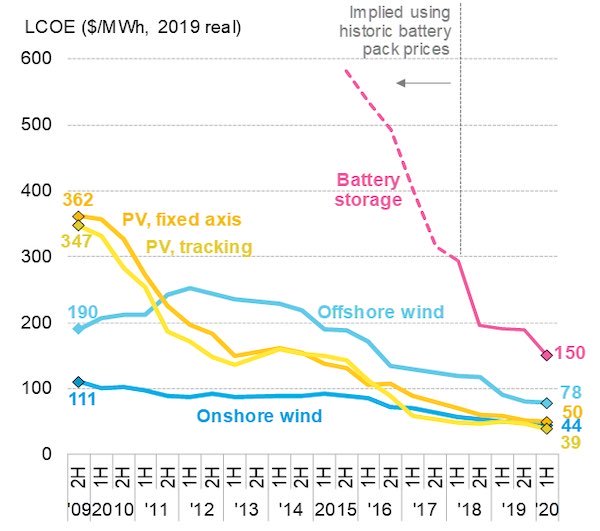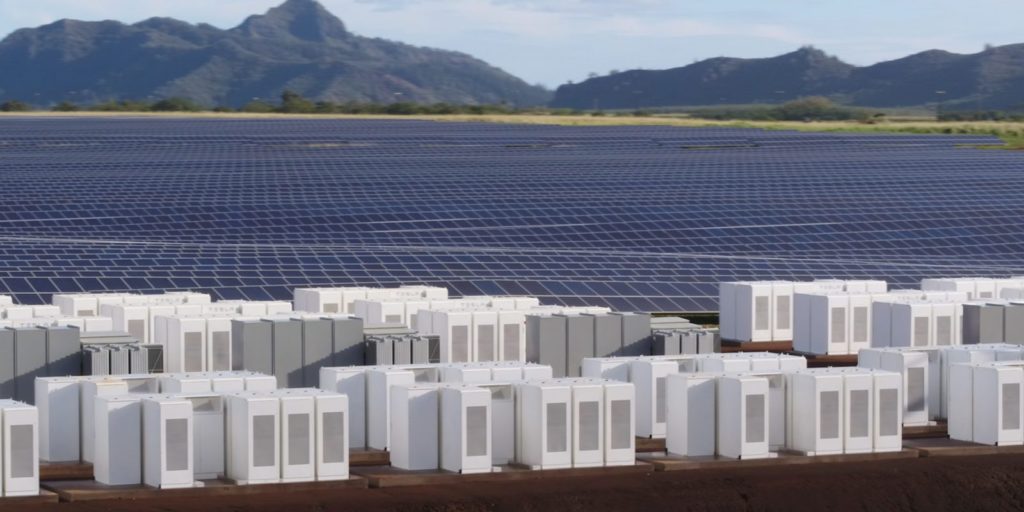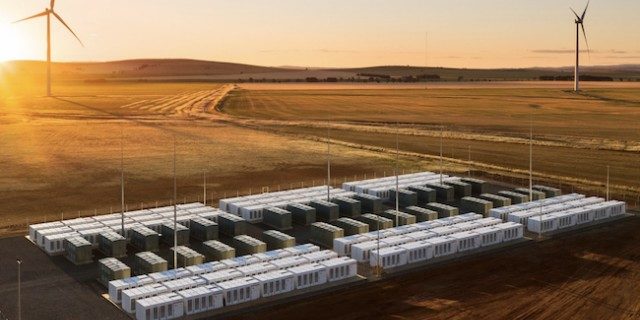The production of electricity with sources such as wind and solar has become the most economical format for two-thirds of the population, which represents 85% of world electricity consumption. This factor makes polluting sources such as coal and gas less and less attractive from an environmental, but also an economic point of view. A trend that entering the equation of large battery installations is helping to accelerate.
A report by Bloomberg indicates how the leveled cost of energy, or the leveled cost of electricity, from sources such as wind power, has dropped 9% in the last six months. Solar photovoltaic has made it 4%. A solar that in 10 years has seen its costs decrease by 90%.

These drops have left the average costs of $44/MWh for wind and $50/MWh for solar. Figures that threaten to continue falling sharply in the coming months thanks to factors such as the improvement in the efficiency of technologies like wind power, with increasingly larger wind turbines, as well as the entry into the action of batteries.
Storage systems have seen their cost halved in the past two years. Something that has allowed this technology to become the cheapest option to handle peaks in demand compared to other traditional sources such as gas.
The result is that the sector is achieving level energy costs of just $24/MWh, while many of the new projects in the United States, India, and Spain are priced between $26 and $29 per megawatt-hour respectively. Even in markets where the presence of sources such as gas or coal is still intense, prices of up to $23 per MWh will be seen. Figures that we can compare with the more than $300 an MWh that was paid ten years ago for solar, or the $100 an MWh for wind power.
A trend that Bloomberg indicates will accelerate with the adoption of stationary batteries, which currently have an average of 30 MWh per installation. Some like the one carried out by Tesla in Australia a couple of years ago, with 150 MWh, for the moment the maximum exponent.
A technology hitherto weighed down by high costs, which have been gradually falling to a figure of about $150 per MWh for a facility with 4 hours of storage capacity. But in China, thanks to the extension of the production of the economical lithium-ferrophosphate (LiFePO4) batteries, these prices are already below $115 per MWh.

Figures that we can compare with the cost of traditional sources such as gas, which currently stands at $99 per MWh in the United States, a large producer of gas. While for those who must import it, the cost rises to $145 an MWh in China and $235 in Japan.
Something that makes batteries a practically fundamental element for investors who see how the costs of technology continue to drop. It will also allow the cost of electricity production to be reduced. At the same time it will serve as a solution to the intermittencies of renewable energies that you will enjoy with these batteries that will become increasingly common in the new wind or solar parks.

